First of all, POCT testing is usually performed by clinical staff (i.e. nurses and physicians), who are neither so skilled nor educated for laboratory work as laboratory professionals.
Moreover, testing is usually done in patients receiving various medications and fluids in which sampling is done repeatedly in a non-fasting state and at different time points during the day.
Those patients are quite often not conscious and venipuncture is very often difficult due to fragile veins, hypotension and many other conditions. Last, but not the least, POCT results are always needed in a very short time.
Due to all the reasons mentioned above, POCT testing is done under stress. To avoid the risk of potential errors, all procedures need to be standardized and automated wherever possible.
All who are involved in POCT testing should be provided with continuous education. The aim of this article is to review the causes and corrective procedures for some of the most common preanalytical errors in POCT.
ERRORS IN LABORATORY MEDICINE
The contribution of the laboratory services to the patient care plays a key role within the health system. Although the laboratory approximately spends only up to 10 % of the total hospital budget, it delivers almost up to 70 % of the diagnostic information per patient.
Having that in mind, it is quite understandable that laboratory errors may have serious consequences to patient health and outcome.
Laboratory error is a defect occurring in any part of the laboratory total testing cycle: test ordering, test requesting, patient preparation, patient identification, sampling, sample transport and delivery to the laboratory, centrifugation, analysis, reporting and interpretation of results.
Unfortunately, the evidence shows that most of the laboratory errors (60-80 %) occur outside of the analytical phase and most often outside of the laboratory (i.e. the preanalytical and postanalytical phase).
Moreover, it is the preanalytical phase that is most vulnerable to errors.
Laboratory professionals must therefore ensure that all possible efforts are made to minimize the potential risk of errors and predicted waste. This can be assured by process optimization, standardization and total quality management.
These principles equally apply to all laboratory disciplines, but are most relevant to the field of point-of-care testing (POCT), for many different reasons.
WHAT IS SO SPECIAL ABOUT POCT?
The field of POCT holds approximately ¼ of the global IVD market and is expected to show continuous rapid growth in the next decade.
This field is therefore rapidly changing the traditional structure and organization of the laboratory service – from large centralized laboratories to a more decentralized structure.
Nowadays, modern health facilities, next to the central laboratory, also offer various testing services provided at the point of the patient care, fulfilling the ultimate aim to provide the best result for the right patient at the right time.
Those services include blood gas analysis, bilirubin, electrolyte and glucose monitoring, coagulation and hematology analyses, cardiac marker tests, drugs-of-abuse testing, etc.
It must be emphasized that the overall quality of the total testing process in the field of POCT is best taken care of when it is under the responsibility of the laboratory.
By shifting the point of the laboratory service from the central laboratory to the patient bedside, the laboratory therefore meets ever increasing difficulties in managing the quality in that area.
According to recent literature estimates, the quality of POCT is not managed appropriately. Manufacturer’s instructions for routine instrument operation and maintenance as well as instructions for handling and storage of reagents are often not followed.
Moreover, quality control and calibration are quite often not performed according to the manufacturer’s instructions.
Major characteristics which contribute to the increasing quality demands in the POCT are:
- Testing is performed by clinical staff (nurses, physicians)
- Who are neither so skilled nor educated for laboratory work as laboratory professionals;
- Who have different levels of competence and understanding of the analytical process involved in the testing and the potential sources of errors;
- Testing is usually done for patients (intensive care units, neonatology, emergency room) who are quite different from the rest of the patient population and often have some specific demands regarding sampling and analysis:
- Patients are receiving various medications and fluids (nutrition, blood transfusion, etc.);
- Sampling is done repeatedly in a non-fasting state and at different time points during the day;
- Venipuncture is often difficult (fragile veins, hypotension, etc.);
- Patients are often not conscious nor contactable;
- Results are needed in short time;
- Operators are working under stress.
To minimize the risk of errors all those issues need to considered and a total quality management system covering the complete POCT process should be established.
This can be achieved by simplifying and standardizing the processes, implementing process automation wherever possible and continuous education of all who are involved in the POCT.
Moreover, standard operating procedures should be available to all users and should contain detailed and updated descriptions of the best practices for procedures in use.
MOST COMMON PREANALYTICAL ERRORS IN POCT
It should be kept in mind that a bad sample always gives a bad result. No result is therefore always better than a bad result. Care needs to be taken to avoid all possible sources of error.
If an error has occurred, which could have potential significant impact on the test result and could lead to an incorrect clinical decision and inappropriate treatment, the sample should be rejected and the request cancelled. The most common preanalytical errors occurring in the area of POCT are:
1) Patient preparation errors
- Incorrect sampling time
2) Blood collection errors
- Patient identification errors
- Sampling errors
- Tubes underfilled
3) Sample handling and transport errors
- Inadequate sample mixing (clotted sample, microclots, incomplete clotting – fibrin interference)
4) Interferences
- Hemolyzed sample
Unfortunately, most of those errors are not detectable within the testing process, but luckily, many are preventable by standardization of the process and proper staff education.
Some of the most common preventable preanalytical errors are discussed below.
Incorrect sampling time
Ideally, to minimize the error regarding the sampling time, sampling should preferably be done after an overnight fast and preferably in the morning between 7 and 9 a.m.
In case that sampling is done at some other time, the exact time needs to be recorded on the test request. This information needs to accompany the test report.
This is necessary to ensure that longitudinal changes in the individual patient are correctly interpreted.
Why is the sampling time so important? It is well established that many analytes and blood parameters vary with time during the day, month or even between seasons.
For example, the majority of hormones are present in their maximal concentrations during the morning. Moreover, some parameters show variations relative to the phase of the menstrual cycle and reproductive age.
During pregnancy, for example, the majority of coagulation tests are altered (factor activities are increased, inhibitor activities decreased, D-dimer increased, etc.).
On top of that, the composition of the blood undergoes significant changes after food consumption.
Besides the fact that concentration of some parameters may change due to the direct effect of food consumption and intestinal absorption, it should also be emphasized that blood may become lipemic (turbid sample) postprandially.
Turbidity in lipemic samples originates from a high triglyceride concentration and may cause errors in the measurement signal for some analytes (immunochemistry tests, coagulation tests, hemoglobin, mean corpuscular hemoglobin (or mean cell hemoglobin – MCH), etc.).
Lipemia should therefore be avoided whenever possible.
Sampling time is also very important respective to the various diagnostic and therapeutic treatments that the patient may be receiving (e.g. oral anticoagulant or digoxin therapy, glucose or potassium infusions, immunoglobulin, blood transfusion, etc.).
If possible, sampling should always be done prior to the interfering diagnostic procedure or drug administration.
If the sample has to be obtained after a drug (which has a potential interfering effect on the requested tests) has already been administered, blood should be obtained only after the peak concentration has been reached and the patient is in the so-called steady state.
Generally, blood sampling should be done at least one hour after the i.v. administration of various intravenous fluids (electrolytes, glucose). If a patient is receiving parenteral nutrition (fat emulsions), sampling should be done preferably before, or 8 hours after the administration of the infusion.
Samples obtained during or shortly after administration of fat emulsions might become lipemic. This may cause some significant errors for many analytes.
Naturally, for emergency POCT tests, sampling is performed at different times during the day. In that case, sampling time and time of administration of any therapeutic treatments and infusions must be recorded in the patient record and preferably also provided on the test report.
Sampling time relative to the biological variation and time of treatment administration has to be taken into account when interpreting the test results.
Patient identification error
Patient identification errors are the most frequent preanalytical POCT errors. To assure proper patient identification, recommended practice is to use barcoding systems which may link sample, operator, instrument and test result to the patient record.
Patient identification should always contain full patient name, date of birth, address and unique identification number (hospital-based ID numbers, or some other number according to the policy of the hospital).
Patients should wear identification bracelets for that purpose during the entire hospitalization period.
The person who performs the sampling must ensure that the information on the test request form is identical to the information obtained from the patient.
If the patient is not conscious or is not able to speak (children, foreigners, etc.), information should be obtained from the person who is responsible for the patient (relative, caregiver, friend).
There should be a clear institutional policy on the identification procedure and on the way consent for sampling must be obtained from the patient.
According to the CLSI guidelines sampling should not be done if the patient’s (or the guardian’s) consent is not obtained.
Sampling site
Venous, arterial and capillary blood samples may be used for POCT testing. For all sample types, appropriate CLSI guidelines exist which precisely define the procedure of sample collection.
To ensure that minimal risk of errors exists, health professionals involved in sample collection procedures must strictly adhere to those guidelines.
Turnaround time (TAT) is crucial to bedside testing. Most POCT instruments nowadays use venous heparinized whole blood (WB). Heparinized WB is usually applied directly to the POCT instrument, thus eliminating the centrifugation step necessary to obtain plasma or serum.
The obvious advantage of WB POCT testing over standard laboratory methods using plasma is the shorter TAT from needle to result and larger sample volume as compared to the capillary sample.
Besides, the centrifugation step requires equipment (centrifuge and pipettes) and skills necessary to separate plasma after centrifugation.
The most common error related to the sampling site is the blood sampling from the i.v. catheter. According to the CLSI guidelines, blood drawing is not recommended from i.v. catheters in patients who receive any kind of medication.
If a blood sample has to be obtained from a patient who is receiving an i.v. fluid, the recommendation is that the sample is obtained from the opposite arm.
If for some reason this is not possible, the sample may be drawn through an i.v. catheter after discarding the adequate amount of blood (6x volume of the dead space of the catheter for coagulation tests and 2x for other tests), shutting off the catheter for at least 2-3 minutes, applying the tourniquet below the i.v. line and choosing the venipuncture site below the tourniquet (distally).
Even though this technique could be used for most biochemistry tests, glucose testing should be avoided from samples obtained from an i.v. catheter if the patient is receiving glucose infusion. In that case, the opposite arm should be used for blood sampling.
Sampling from the site above the i.v. catheter (proximally) should never be done.
Sampling technique
Two most common preanalytical errors related to the sampling technique for POCT include “milking” during capillary sampling and venous blood sampling using a syringe.
Excessive massage and squeezing around the puncture site (commonly called “milking”) is often done when capillary blood flow is not adequate to obtain the necessary blood volume to fill the tube.
Excessive massage may cause falsely decreased concentrations (up to 10 %) of some parameters due to the dilution of the blood sample with tissue fluid and falsely increased concentration of potassium due to sample hemolysis.
To avoid this, a lancet of adequate size should be used to ensure satisfactory skin incision. Moreover, in patients suffering from severe dehydration and patients with poor peripheral circulation, capillary sampling should not be performed.
The use of syringes greatly increases the risk of hemolysis and clot formation. Therefore, whenever possible, syringes should not be used for blood sampling. Moreover, according to the CLSI, syringes should be avoided for venous blood sampling, for safety reasons.
Patient condition
Attention should be paid whenever the blood sample is obtained from a patient who is hyperventilating, crying or is anxious. Such patient conditions could have a substantial influence on some parameters like: pH, pO2, pCO2, glucose, lactate, cortisol, white blood cells (WBC) and some other.
Therefore, care should be taken to calm down the patient and postpone the sampling until the anxiety has been relieved. If sampling is done in children, parents should be encouraged to comfort their child to reduce distress during the procedure.
If that is not possible, a note on the patient condition should be added to the request form and the result interpreted with respect to that important information.
Tubes not correctly filled
If tubes with additives are used, care must be taken during sampling to fill the tubes until the vacuum is exhausted and blood flow ceases. If small-volume tubes are used for capillary sampling, the tubes must be filled to the mark, to required volume.
This is important to ensure the proper blood-to-additive ratio. Underfilled tubes are among the most common preanalytical errors in POCT. The quantity of additive (anticoagulant) in tubes is such to ensure the proper ratio of blood and anticoagulant, if the tube is completely filled.
In underfilled tubes, the concentration of anticoagulant is increased and this may cause significant changes in measured parameters. For example, coagulation tubes contain 3.2 % liquid sodium citrate as the anticoagulant.
Sodium citrate acts by chelating calcium, which is the essential element for blood clotting. If tubes are underfilled, the citrate-to-blood ratio becomes too high which leads to falsely increased clotting times. It is therefore critical that coagulation tubes are adequately filled.
Underfilled tubes must be rejected for analysis.
Besides coagulations tests, underfilled tubes are also inappropriate for measuring hematocrit and mean cell volume (red blood cells shrink due to the effect of EDTA) as well as in some immunoassays (heparin interference).
Moreover, the excess of anticoagulant might cause alterations in blood-cell morphology. For the above mentioned reasons, blood should never be combined from two tubes even if they contain the same anticoagulant.
The order of draw
If more than one tube is to be collected, the recommended order of draw stated below must be followed during the blood sampling. The order of draw is to avoid carry-over of additives from one tube to another.
Carry-over may alter the composition of the subsequent tube and cause false test results. For example, if an EDTA tube is filled before the serum tube without additives, this may cause falsely elevated potassium and sodium (since EDTA is present in the tube as potassium or sodium salt) while simultaneously decreasing calcium and iron due to the chelating action of EDTA.
EDTA tubes should be drawn before tubes with glycolysis inhibitor (oxalate or fluoride) to prevent alterations in cell morphology due to the disruptive effect of oxalate and fluoride to cell membranes.
The recommended order of draw for venous blood sampling is:
- Blood culture tube
- Coagulation tube (blue cap)
- Serum tube (no additives, red cap)
- Heparin tube (green cap)
- EDTA tube (lavender cap)
- Glycolysis inhibitor (gray cap)
The recommended order of draw for capillary blood sampling is:
- Blood gases
- EDTA tubes
- Other tubes with additives
- Serum tubes (no additives)
The recommended order of draw for capillary blood sampling differs from the order of draw for venous blood sampling. Capillary blood gases may alter dramatically (the pO2 decreases and pCO2 increases) if sampling is delayed.
That is the reason why blood gases are sampled first. Blood gases must be followed by an EDTA tube, due to the risk of erroneous cell count caused by the platelet clumping, if sampling is delayed.
Inadequate sample mixing
Sample clots are a serious preanalytical error which may sometimes go undetected and cause spurious results for numerous analytes. To prevent blood clotting, tubes must be inverted gently several times, as soon as collection is done.
The exact number of inversions varies and is usually declared by the tube manufacturer. Generally, tubes with additives need to be inverted 8-10 times, whereas other tubes are usually inverted 3-5 times.
By gentle inverting the tubes, anticoagulant is properly mixed with blood. Samples should not be mixed too vigorously, to avoid hemolysis.
If clots are present and visible, such a sample should be rejected for analysis and repeated sampling should be done for that patient. Most POCT instruments have clot detectors which release warnings when clots are detected.
Hemolysis
Hemolysis is caused by cell blood lysis and is considered the most frequent preanalytical error. Hemolysis is also the most common cause of sample rejection by the central laboratory.
Hemolysis causes interference with many assays, due to the release of the blood-cell components from the lysed blood cells.
In hemolyzed plasma concentrations of lactate dehydrogenase (LD), potassium, creatine kinase (CK), aspartate aminotransferase (AST) are falsely elevated, while the concentration of bilirubin is falsely decreased.
Hemolysis also interferes in most troponin assays, routine coagulation and hematology analyses. Hemolysis is preventable, i.e. in most cases hemolysis can be avoided by just following the standard blood sampling procedure.
To prevent hemolysis during venous blood sampling, care must be taken to match the size of the needle and tube with the size of the vein. If the tube is too large and the vacuum forces too strong respective to the needle diameter, shear forces will be too strong and blood will probably be hemolyzed.
The same will happen if blood is drawn with the use of syringes and the syringe plunger is pulled back too fast or blood is forced too fast from the syringe into the evacuated tube.
As already mentioned, to prevent hemolysis during capillary blood sampling, excessive massage should be avoided as this will cause sample hemolysis.
CONCLUSION
Preanalytical errors at point-of-care testing (POCT) are quite common. The risk of errors may be minimized by simplifying and standardizing the processes, implementing process automation wherever possible and continuous education of all who are involved in the POCT.
Written and continuously updated standard operating procedures should be available to all users and should contain a detailed description of the best practices for procedures in use.
To avoid some most common preanalytical errors in POCT, the following 20 tips are recommended:
- Sampling should preferably be done after an overnight fast and preferably in the morning between 7 and 9 a.m.
- In case that sampling is done at some other time, the exact time needs to be recorded on the test request.
- Blood sampling should be done at least 1 hour after the i.v. administration of various intravenous fluids (electrolytes, glucose).
- If a patient is receiving parenteral nutrition (fat emulsions), sampling should be done preferably before the administration of the infusion, or 8 hours after the infusion.
- To assure proper patient identification, recommended practice is to use barcoding systems which may link sample, operator, instrument and test result to the patient record.
- Patient identification should always contain full patient name, date of birth, address and unique identification number (hospital-based ID numbers, or some other number according to the policy of the hospital).
- Blood drawing is not recommended from i.v. catheters in patients who receive any kind of medication.
- If a blood sample has to be obtained from a patient who is receiving i.v. fluid, the sample should be obtained from the opposite arm.
- Is no other option is possible, a sample may be drawn through an i.v. catheter after discarding the adequate amount of blood, shutting off the catheter for at least 2-3 minutes, applying the tourniquet below the i.v. line and choosing the venipuncture site below the tourniquet (distally).
- Sampling from the site above the i.v. catheter (proximally) should never be done.
- Excessive massage and squeezing around the puncture site during capillary sampling should be avoided.
- Whenever possible, syringes should not be used for blood sampling.
- Attention should be paid whenever the blood sample is obtained from a patient who is hyperventilating, crying or is anxious. Such patient should be calmed down and sampling postponed until the anxiety has been relieved. If this is not possible, a note on the patient condition should be added to the request form.
- If tubes with additives are used, care must be taken during sampling to fill the tubes until the vacuum is exhausted and blood flow ceases.
- If small-volume tubes are used for capillary sampling, the tubes must be filled to the mark, to required volume.
- If more than one tube is to be collected, the recommended order of draw must be followed during the blood sampling.
- To prevent blood clotting, tubes must be mixed gently, as soon as collection is done.
- Samples should not be mixed too vigorously, to avoid hemolysis.
- Samples with visible clots should be rejected for analysis and sampling should be repeated.
- To prevent hemolysis during venous blood sampling, care must be taken to match the size of the needle and tube with the size of the vein.




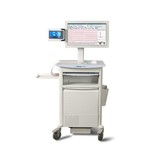

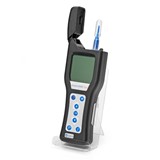
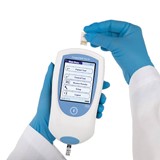



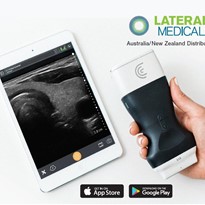

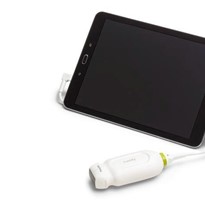



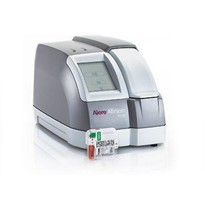





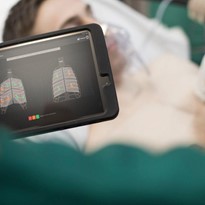
-205x205.jpg)